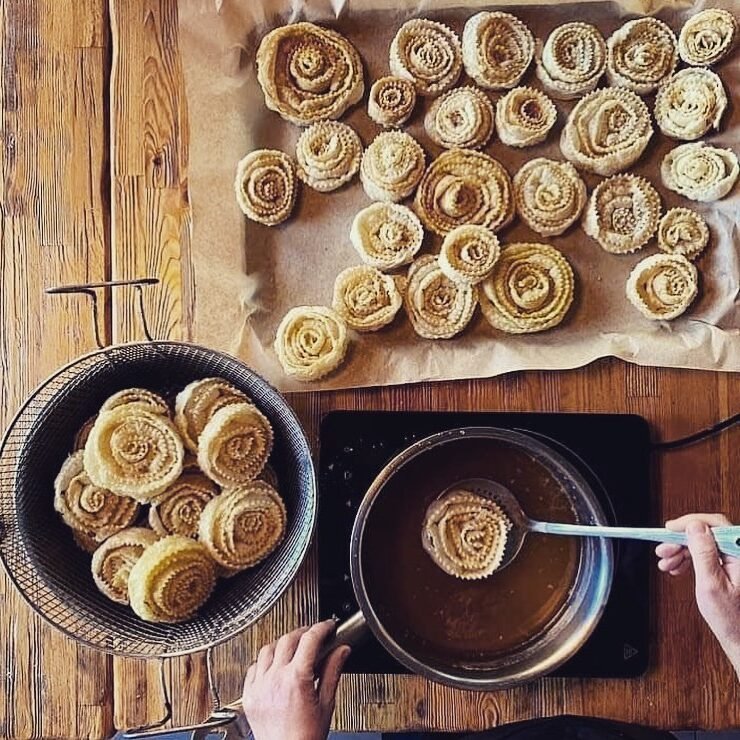You’ve likely heard of Greek cuisine, but have you explored the sweet side of Cretan gastronomy? Crete, Greece’s largest island, boasts a dessert tradition as rich and diverse as its ancient history. From cheese-filled pastries to honey-drenched delicacies, Cretan sweets offer a unique taste of Mediterranean paradise.
As you venture into this world of traditional Cretan desserts, you’ll discover how local ingredients and time-honored techniques come together to create unforgettable flavors. But what makes these desserts truly special, and how can you experience them for yourself? Let’s uncover the secrets of Cretan confections.
Cretan Culinary Heritage
The Mediterranean diet of Crete is renowned worldwide, but the island’s sweet traditions deserve equal recognition. These traditional desserts trace their origins back more than four millennia, representing generations of culinary expertise and cultural heritage.
The streets of Crete’s villages fill with the aroma of honey-drizzled pastries and fresh-baked goods throughout the day. Local ingredients define these treats, with golden thyme honey from mountain apiaries and mizithra cheese from local shepherds serving as foundational elements.
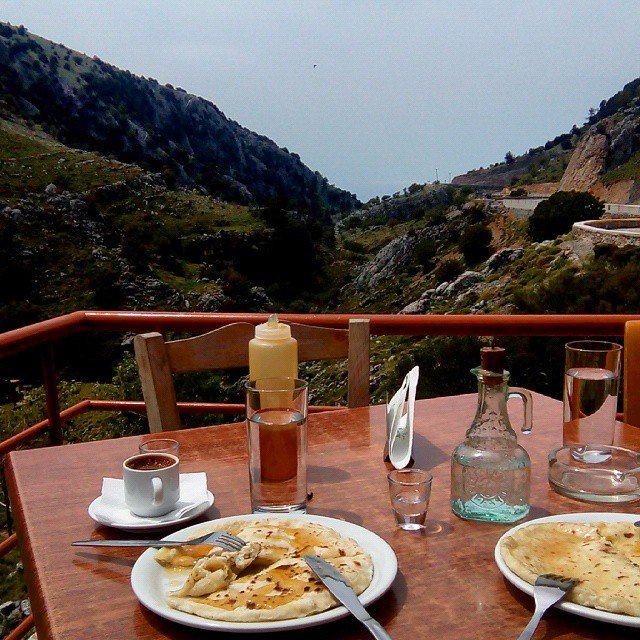
Three essential desserts form the core of Cretan sweet cuisine: kalitsounia, sfakianopita, and xerotigana. These traditional confections carry the weight of history, with recipes preserved and adapted through centuries. While individual families maintain their unique variations, the fundamental character of these desserts remains constant, offering authentic tastes of Cretan heritage.
The Sweetness of Traditional Kalitsounia
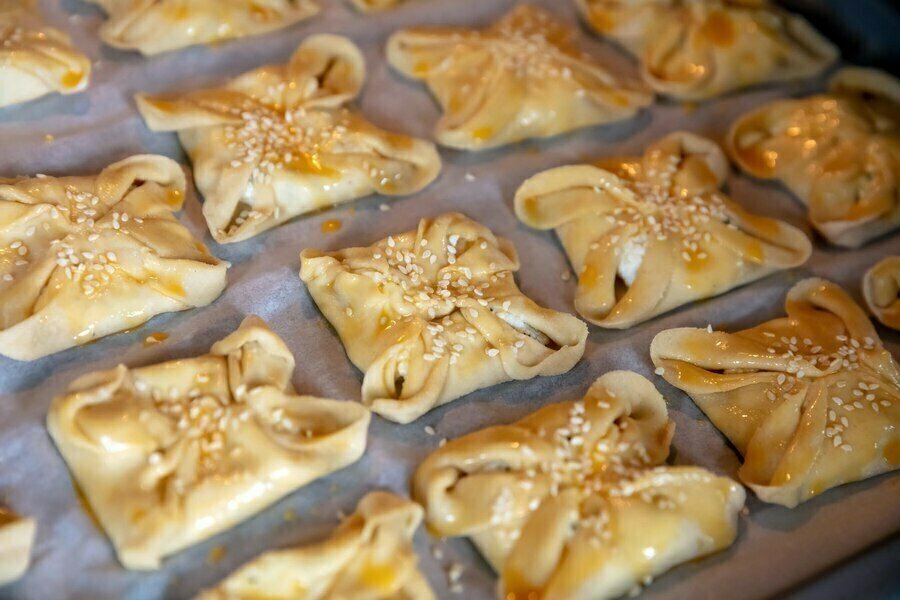
Kalitsounia represents a cornerstone of Cretan desserts. These cheese-filled pastries originated as Easter specialties, symbolizing the end of the Lenten fast, but their popularity has transformed them into a daily staple of Cretan life. The tradition of preparing kalitsounia often brings multiple generations together, making it as much a social occasion as a culinary practice.
The classic kalitsounia features fresh mizithra cheese, known for its mild, unsalted character. When mizithra proves difficult to source, some bakers substitute mascarpone or ricotta while maintaining traditional techniques. The pastry shell recipes vary between households, though all versions culminate in a crisp exterior drizzled with Cretan thyme honey.

Regional interpretations flourish across the island, particularly in Chania where these treats hold special significance. The variations include round lihnarakia, whose shape pays homage to ancient oil lamps, and anevata, which takes either a square form in eastern Crete or a triangular shape in the western regions. These distinct styles reflect deep-rooted regional pride, with each area maintaining its own methods and familial recipes.
Sfakianopita: Mountain-Born Delicacy

The Cretan culinary tradition of sfakianopita emerged from the rugged mountains of Sfakia in the 17th century. This resilient dish reflects the ingenuity of mountain shepherds during the Ottoman occupation, who developed a recipe suited to the harsh mountainous terrain. The administrative center of Chora Sfakion remains the heart of this culinary heritage, where the recipe continues largely unchanged.
Here’s what makes sfakianopita truly special:
- Its unleavened dough, combining flour, salt, olive oil, water, and raki
- Fresh young mizithra cheese filling, prized for its characteristic subtle sourness
- Traditional pan-frying technique that creates a distinctive golden crust
- Customary drizzle of local thyme honey before serving
- Deep cultural significance, celebrated at the annual Sfakianopita Festival
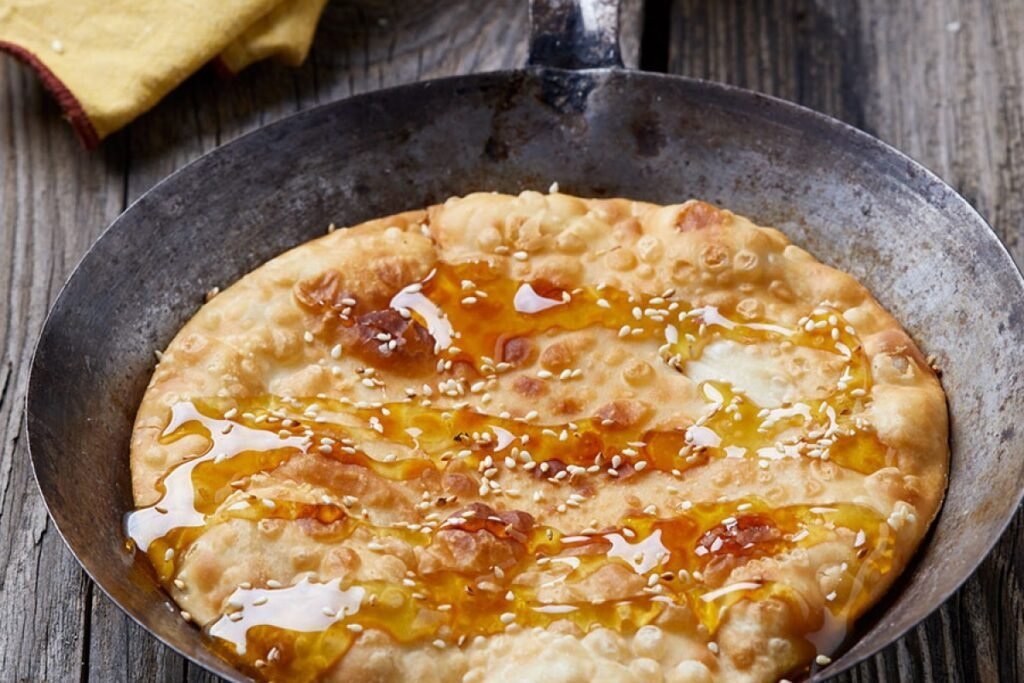
German linguist Michael Deffner documented the significance of this dish in 1919, praising its unique character. For the most authentic experience, visitors should seek out small establishments in Chora Sfakion or Asfendou village, where local cheese and traditional methods prevail over mass-produced versions found in urban restaurants. These locations maintain the true spirit of this mountain-born delicacy, preserving both its historical technique and cultural importance.
Xerotigana: Festive Fried Delights
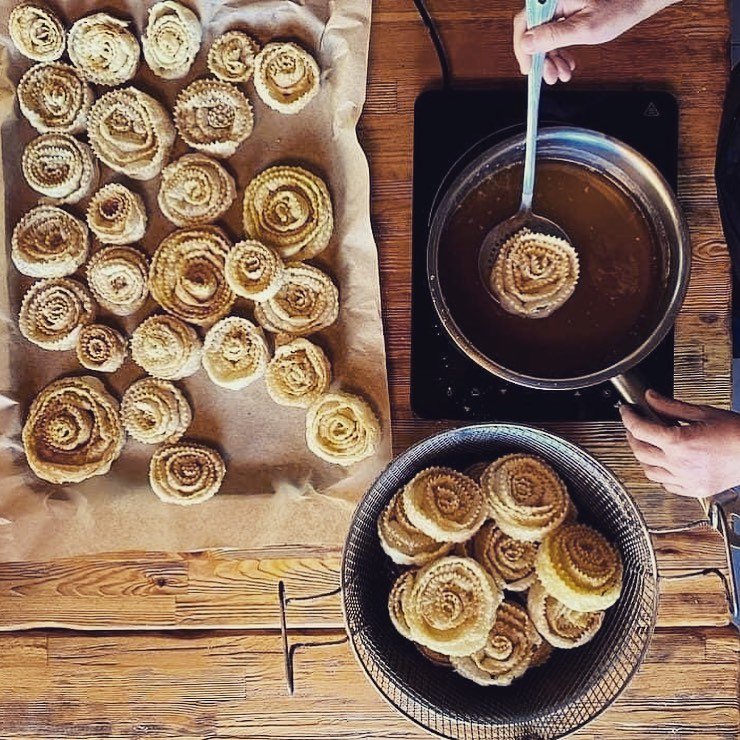
Xerotigana holds a special place in Cretan celebrations, particularly as the principal sweet at traditional Cretan weddings, where it symbolizes abundance and fertility. While similar to mainland Greece’s diples, xerotigana are distinctly Cretan, characterized by more intricate folding patterns and their unique addition of raki to the dough. These honey-soaked pastries also grace baptisms and festive gatherings throughout the year, though they originated as a Lenten dessert.
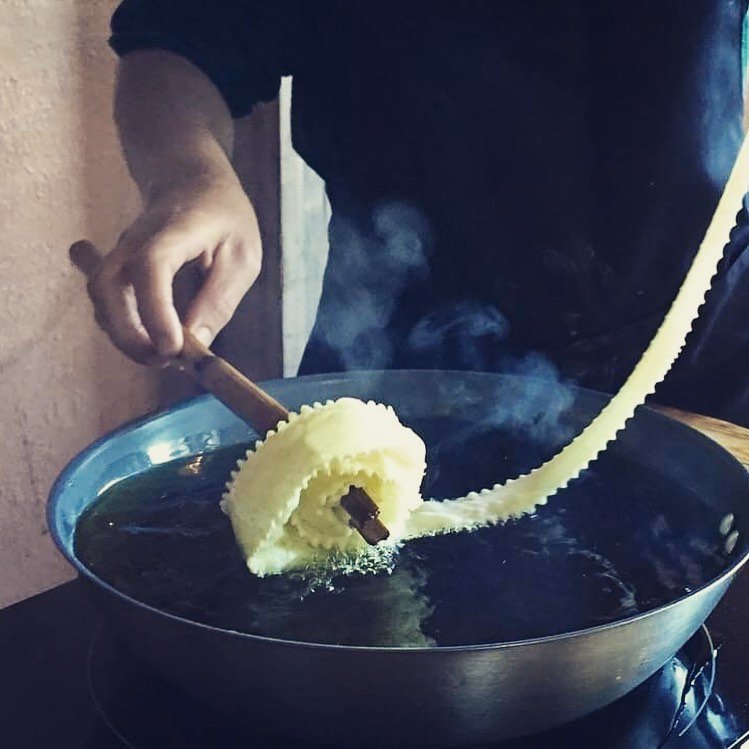
Here’s what distinguishes these celebratory treats:
- A base of simple, local ingredients: oil, raki, flour, and water
- Five distinct shapes: rounded, bowknot, twisted, fluted, and tidbits
- Traditional garnishes of sesame seeds, cinnamon, and crushed walnuts
- A finishing touch of local thyme honey
The craft of xerotigana requires precise technique, from the careful folding of dough strips to achieving the perfect golden hue during frying. Once common only during specific religious periods, these treats now appear year-round in patisseries across Crete, from Sfakia to Heraklion. Modern presentations include decorated trays and special boxes, making them popular gifts during the Christmas season.
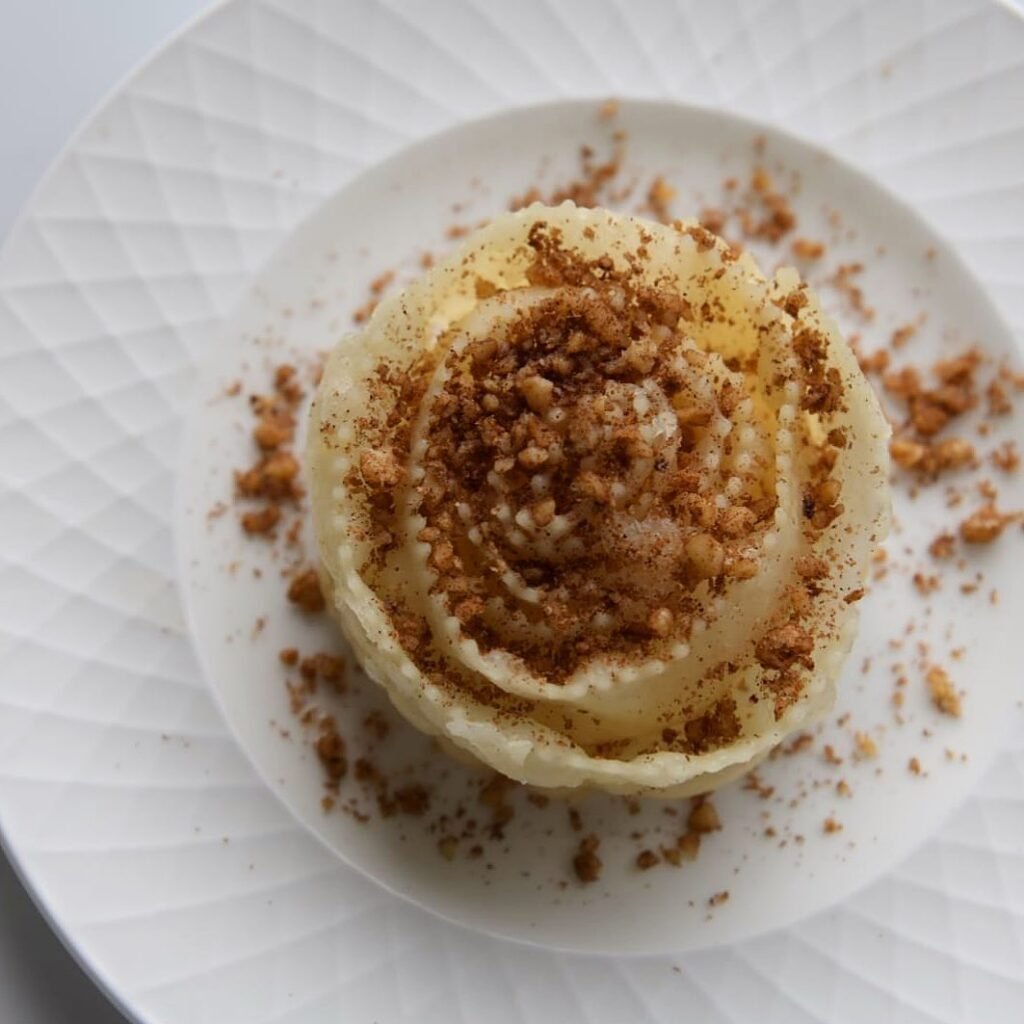
Beyond their presence at formal celebrations, xerotigana has become a standard offering in local taverns, often served alongside raki. Their popularity has spread throughout the Aegean islands, though the Cretan version maintains its distinctive character, representing the island’s renowned hospitality and rich culinary heritage.
Local Ingredients in Traditional Cretan Desserts
Traditional Cretan desserts rely on a distinctive selection of local ingredients that form the foundation of the island’s culinary identity. The most notable component is thyme honey, particularly the light, amber-hued variety from Sitia, which stands out among three main types produced on the island.
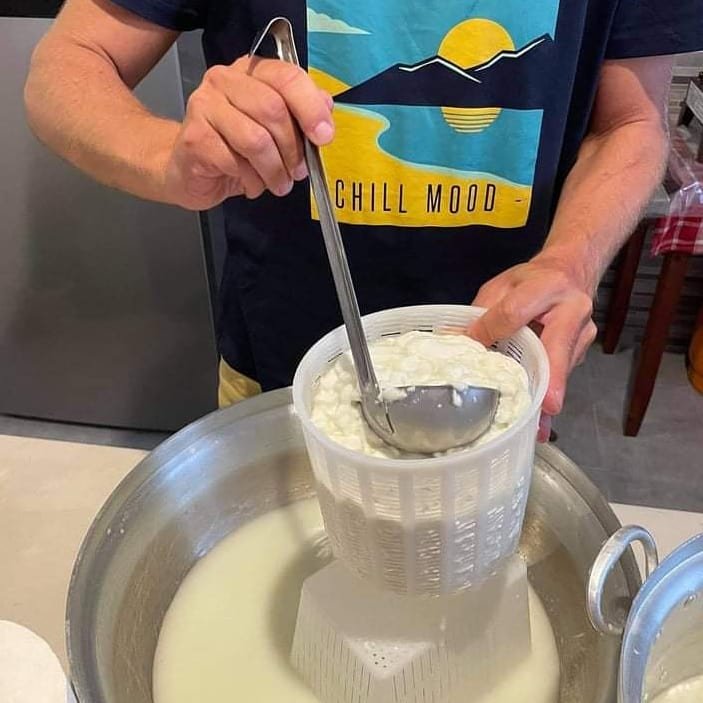
Mizithra cheese, crafted from local sheep and goat milk, provides a soft, creamy element to many desserts. Its mild character creates an ideal counterpoint to the honey’s sweetness in traditional recipes.
Essential components of Cretan sweets include:
- Crunchy almonds and walnuts for texture
- Aromatic cinnamon and cardamom for warmth
- Sesame seeds for nutty depth
- Raki, the local spirit, for flavor enhancement and digestion
These regional ingredients reflect generations of culinary expertise, with each component carefully selected to maintain the authentic character of Cretan desserts. The combination of local honey, fresh cheese, nuts, and spices ensures the preservation of traditional flavors that have defined these sweets for centuries.
Honey’s Golden Touch
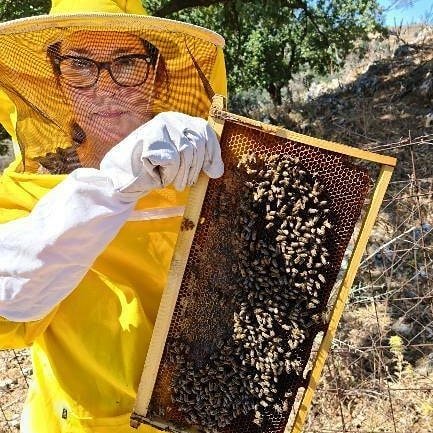
Cretan honey serves as a vital element in transforming traditional desserts into extraordinary delicacies. The rich flavor of this amber nectar reflects Crete’s biodiversity, derived from the wild thyme and fragrant herbs growing across the island’s terrain.
The honey varies distinctly by season and source. Spring harvests produce light, delicate varieties, while autumn yields honey with robust, caramel-like depths. This diversity stems from the different flowering plants available to bees throughout the year, creating a natural record of the island’s seasonal changes.
When used in traditional sweets like kalitsounia and xerotigana, honey acts as more than a sweetener. As a time-honored ingredient, it represents generations of culinary expertise. Its significance in Cretan gastronomy extends beyond taste, marking it as a fundamental component of the island’s cultural heritage. The careful selection and use of specific honey varieties in different desserts demonstrates the deep understanding local bakers have developed over centuries of culinary tradition.
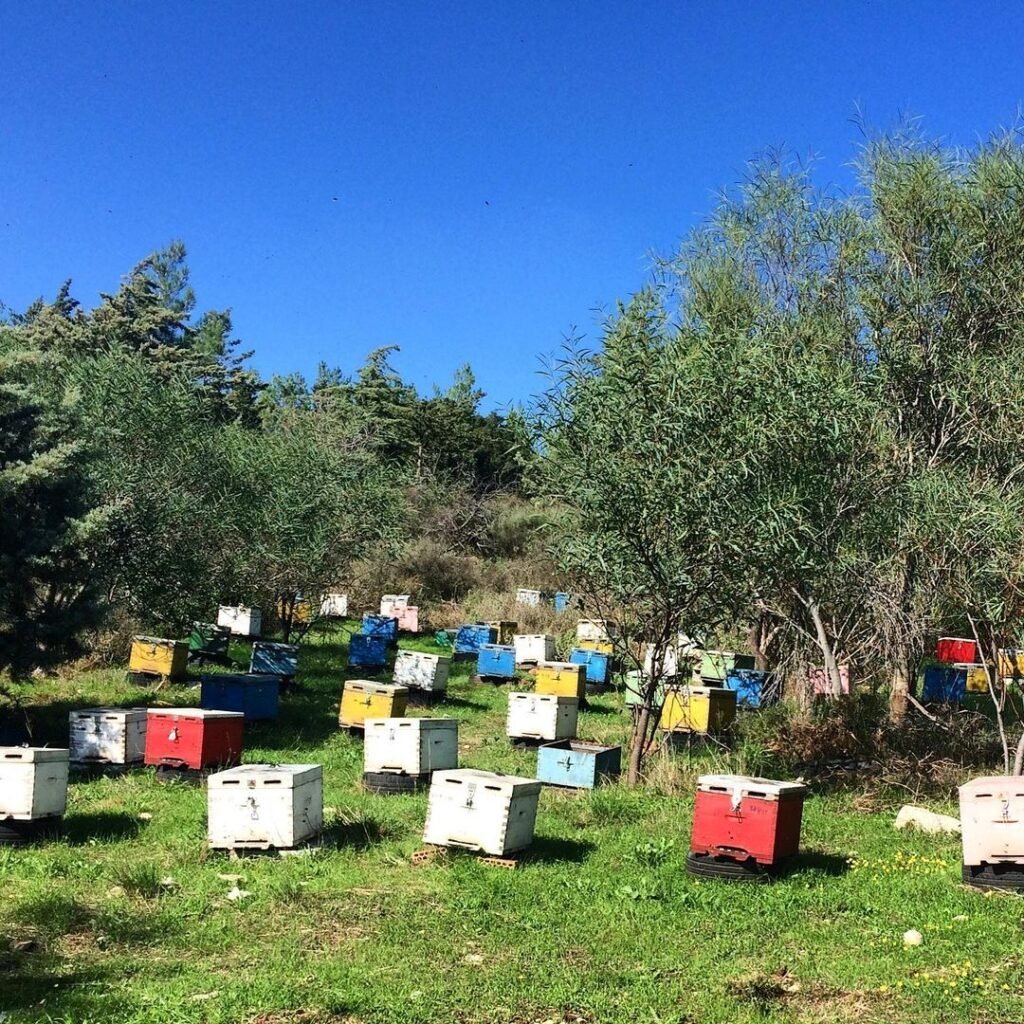
Where to Eat Traditional Cretan Desserts
Traditional desserts flourish across Crete’s diverse regions, with offerings ranging from sophisticated city patisseries to authentic village bakeries. The island’s seasonal festivals provide special opportunities to sample rare and traditional confections from local artisans.
Regional Bakery Guide
As you wander through Crete’s enchanting regions, you’ll discover a treasure trove of bakeries showcasing the island’s sweet heritage.
Chania’s Old Town
Notable establishments in the historic district include:
- Phyllo Bakery – Specializing in authentic kalitsounia using local ingredients
- Red Jane Bakery – Offering contemporary interpretations of classic desserts
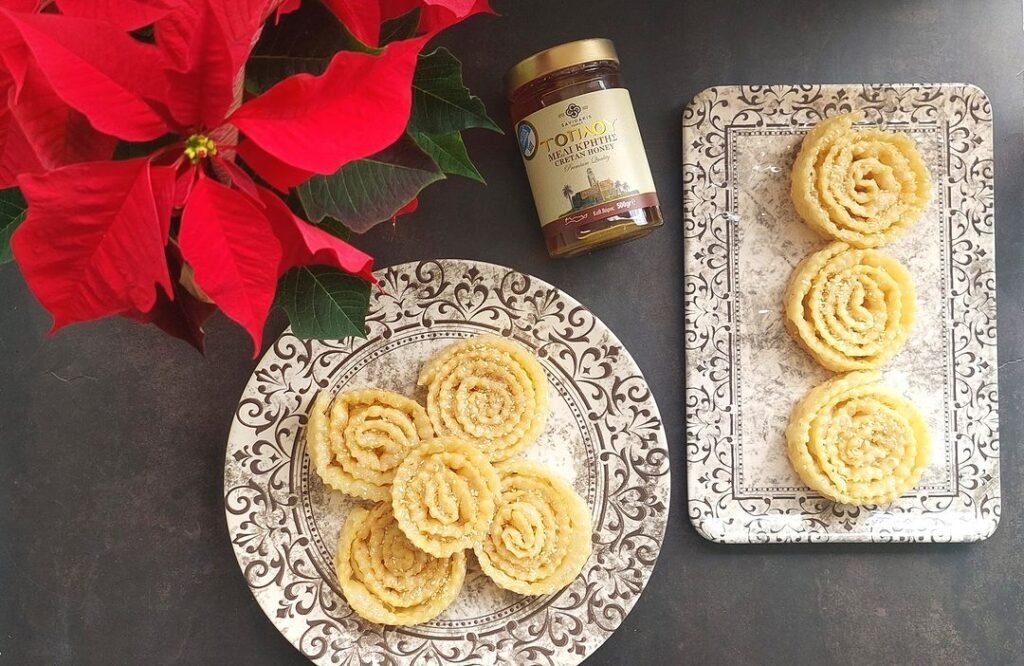
Rethymno
The city’s traditional sweet spots include:
- Patisserie Mona Lisa Skartsilakis – Famous for house-made sheep’s milk ice cream, particularly their rose petal and pistachio varieties
- Biskotto – A cozy old town café serving handcrafted pastries
Heraklion
The capital’s notable patisseries:
- Savoidakis – An established chain with 18 locations across Crete
- Fournos Vamvoukaki – A family establishment offering:
- Fresh kalitsounia
- Traditional sfakianopita
- Classic xerotigana
- Contemporary Cretan desserts
Lasithi Region
The eastern coast features two notable establishments:
- Elena Bakery Patisserie (Konstantinou Palaiologou 32, Agios Nikolaos) – Known for traditional pastries, baklava, and local cheese pies
- Melissa Pastry Stories (Roussou Koundourou 55, Agios Nikolaos) – Combines traditional and modern approaches, specializing in handcrafted chocolates and custom celebration cakes
Seasonal Festivals
Traditional Cretan desserts take center stage at Crete’s seasonal festivals, where local specialties showcase the island’s rich culinary heritage.
Sfakianopita Festival – Chora Sfakion, Late August
The charming port of Chora Sfakion transforms during this celebrated event. Local experts prepare over 6,000 sfakianopites across 100 cooking stations, filling the air with the aroma of fresh, crispy pies. The festival atmosphere comes alive with traditional lyre music performances, while complimentary raki flows freely. Visitors can observe demonstrations of time-honored cooking techniques passed down through generations.
Raki and Wedding Sweets Festival – Kandanos Village, October
This autumn celebration unites two beloved Cretan traditions. The festival features live demonstrations of raki distillation in traditional cauldrons, alongside sampling stations for classic wedding sweets and cheese pies. Live Cretan music accompanies the festivities, while exhibitions showcase local culinary customs and traditional sweet-making techniques. The event offers a comprehensive glimpse into authentic Cretan culture through its gastronomic heritage.
Visitor’s Tips for Cretan Sweets
Finding authentic Cretan desserts requires venturing beyond tourist areas into the heart of local communities. The island’s charming villages offer the most genuine experiences, where traditional recipes and methods remain unchanged.
Essential recommendations for dessert enthusiasts:
- Seek out family-run tavernas in small villages for authentic recipes passed through generations
- Plan visits around local festivals such as the Raki and Wedding Sweets Festival in Kandanos
- Learn basic Greek phrases to enhance local interactions
- Experience desserts with traditional accompaniments like Greek coffee or raki

Local residents prove invaluable resources for discovering hidden culinary gems. Their recommendations often lead to family-owned establishments where traditional sweets maintain their authentic character. These small bakeries and cafes, while sometimes less visible than tourist-oriented establishments, preserve the true essence of Cretan dessert traditions.
A Sweet Legacy
The trilogy of kalitsounia, sfakianopita, and xerotigana stands at the heart of Cretan dessert making. Found in mountain villages, seaside tavernas, and festive celebrations, these traditional recipes showcase the finest local ingredients and time-honored techniques.
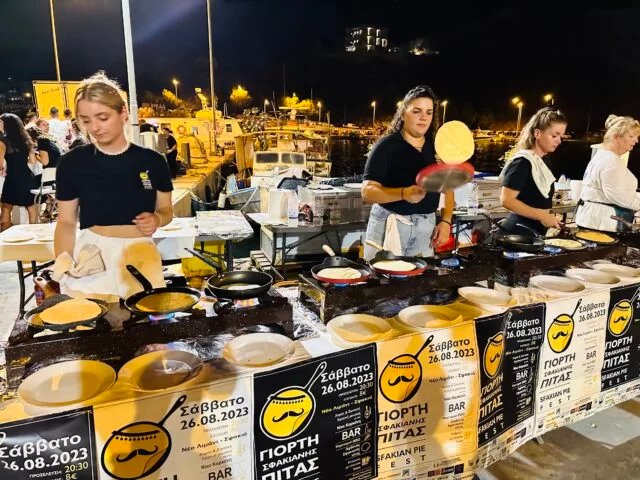
Local bakeries and artisans maintain this heritage through careful balance of traditional methods and modern practices. Their dedication ensures these authentic flavors continue to thrive, from the honey-drenched layers of holiday pastries to daily sweet offerings in village squares.
Conclusion
The traditional desserts of Crete offer more than just sweet indulgence. From honey-drizzled kalitsounia to crispy xerotigana, these confections represent centuries of culinary expertise. Found in local bakeries across the island, from village squares to city centers, each recipe preserves essential elements of Cretan heritage. These traditional sweets continue to showcase the island’s warm hospitality and rich cultural identity, inviting both visitors and locals to participate in their enduring legacy.

